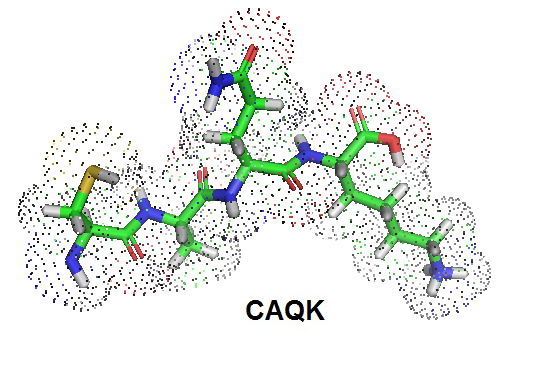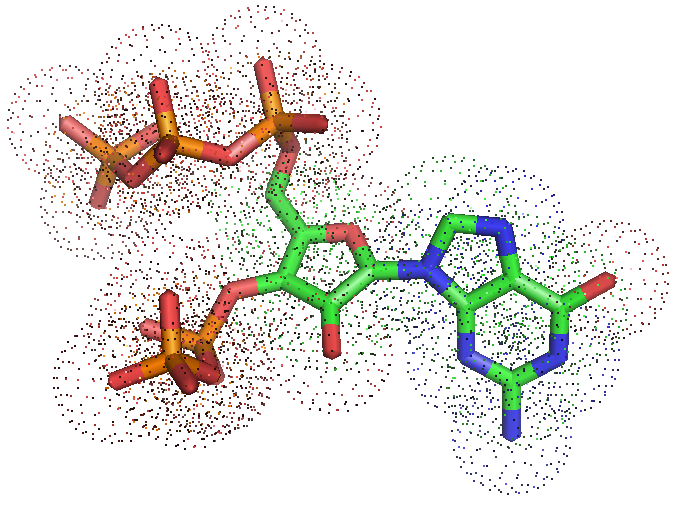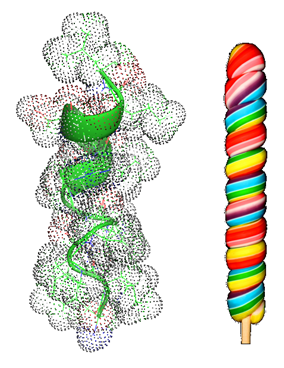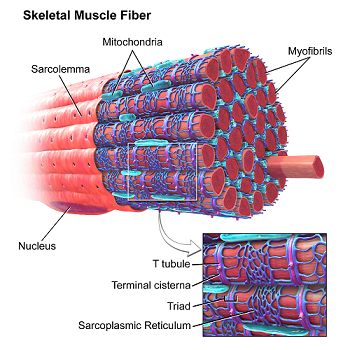|
|
|
Bio-Synthesis Newsletter - August 2016
|
A small peptide for brain injuries
 Recently a short peptide, CAQK, that allows targeted delivery of imaging and therapeutic compounds into acute brain injuries has been discovered. In vivo phage display screening in mice that had severe brain injuries allowed Mann et al. identifying the peptide target as a upregulated proteoglycan complex in injured brains. The researchers could show that the injected peptide homes to sites of brain injury in the mouse model. Also, CAQK-coated nanoparticles containing silencing oligonucleotides allowed delivery of therapeutic siRNA into injured brains.
Recently a short peptide, CAQK, that allows targeted delivery of imaging and therapeutic compounds into acute brain injuries has been discovered. In vivo phage display screening in mice that had severe brain injuries allowed Mann et al. identifying the peptide target as a upregulated proteoglycan complex in injured brains. The researchers could show that the injected peptide homes to sites of brain injury in the mouse model. Also, CAQK-coated nanoparticles containing silencing oligonucleotides allowed delivery of therapeutic siRNA into injured brains.
Reference:
Mann, Aman P. et al. “A Peptide for Targeted, Systemic Delivery of Imaging and Therapeutic Compounds into Acute Brain Injuries.” Nature Communications 7 (2016): 11980. PMC. Web. 15 July 2016.
http://www.ncbi.nlm.nih.gov/pmc/articles/PMC4931241/
|
|
Read More
|
|
|
ppGpp is needed for DNA repair in e. coli
 In bacteria and plant chloroplasts, alarmones globally reprogram cellular physiology during cellular stress. Guanosine tetraphosphate (ppGpp) and guanosine pentaphosphate (pppGpp) are called alarmones. Recent reports show that the alarmone 3’,5’-(bis)pyrophosphate (ppGpp) shuts down transcription in starving bacteria. This response is called the “stringent response” which helps bacteria conserve energy and allows survival of bacteria in adverse conditions. Alarmone is also essential for DNA repair. In bacteria and plant chloroplasts, alarmones globally reprogram cellular physiology during cellular stress. Guanosine tetraphosphate (ppGpp) and guanosine pentaphosphate (pppGpp) are called alarmones. Recent reports show that the alarmone 3’,5’-(bis)pyrophosphate (ppGpp) shuts down transcription in starving bacteria. This response is called the “stringent response” which helps bacteria conserve energy and allows survival of bacteria in adverse conditions. Alarmone is also essential for DNA repair.
Reference:
Venu Kamarthapu, Vitaly Epshtein, Bradley Benjamin, Sergey Proshkin, Alexander Mironov, Michael Cashel, Evgeny Nudler; ppGpp couples transcription to DNA repair in E. coli. Science 20 May 2016: Vol. 352, Issue 6288, pp. 993-996, DOI: 10.1126/science.aad6945.
http://science.sciencemag.org/content/352/6288/993
Steinchen W, Schuhmacher JS, Altegoer F, et al. Catalytic mechanism and allosteric regulation of an oligomeric (p)ppGpp synthetase by an alarmone. Proceedings of the National Academy of Sciences of the United States of America. 2015;112(43):13348-13353. doi:10.1073/pnas.1505271112.
http://www.rcsb.org/pdb/explore/explore.do?structureId=5DEC
. |
|
Read More
|
|
|
Antibacterial Lollipop peptides
 Peptides that resemble a lollipop like shape allow localization into micelle-water interface regions. Temporin peptides are a good example of this type of peptides. Because of their lollipop like helical structure, temporins are used as templates for designing new types of antibiotic peptides. The helical hybrid antimicrobial peptide LG21 is a new type of antimicrobial peptides.
Peptides that resemble a lollipop like shape allow localization into micelle-water interface regions. Temporin peptides are a good example of this type of peptides. Because of their lollipop like helical structure, temporins are used as templates for designing new types of antibiotic peptides. The helical hybrid antimicrobial peptide LG21 is a new type of antimicrobial peptides.
Reference:
Mohanram H, Bhattacharjya S.; 'Lollipop'-shaped helical structure of a hybrid antimicrobial peptide of temporin B-lipopolysaccharide binding motif and mapping cationic residues in antibacterial activity. Biochim Biophys Acta. 2016 Jun;1860(6):1362-72. doi: 10.1016/j.bbagen.2016.03.025. Epub 2016 Mar 23.
|
|
Read More
|
|
|
Musclin, a myokine that enhances physical endurance?
Increasingly, skeletal muscle is recognized as a secretory organ. Subbotina et al. recently identified musclin as an exercise-responsive myokine. Myokines are autocrine, paracrine, or endocrine stimuli that are thought to guide local skeletal muscle remodeling, repair, and maintenance. The use of a knockout mouse model that knocked out a musclin-encoding gene (Ostn) allowed identification of musclin as a myokine critical for skeletal muscle adaptation to physical activity.
Reference:
Ekaterina Subbotina, Ana Sierra, Zhiyong Zhu, Zhan Gao, Siva Rama Krishna Koganti, Santiago Reyes, Elizabeth Stepniak, Susan A. Walsh, Michael R. Acevedo, Carmen M. Perez-Terzic, Denice M. Hodgson-Zingman, Leonid V. Zingman. Musclin is an activity-stimulated myokine that enhances physical endurance. Proceedings of the National Academy of Sciences, 2015; 201514250 DOI:10.1073/pnas.1514250112
|
|
Read More
|
|
|
|
|
|
Bio-Synthesis, Inc.
800 Mario Court, Lewisville, TX 75057, USA
Toll Free: 800.227.0627 | 1.972.420.8505 (Intl.)
|
|
|
|
|
|